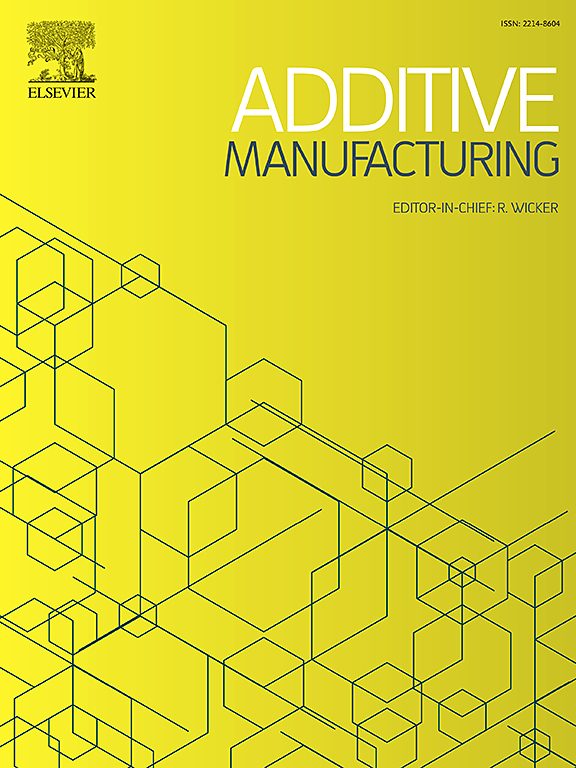A multi-level capture algorithm for accelerating cellular automata predictions of grain structure and texture in additive manufacturing
IF 10.3
1区 工程技术
Q1 ENGINEERING, MANUFACTURING
引用次数: 0
Abstract
Microstructure features including grain morphology and texture are key factors in determining the properties of laser additively manufactured metallic components. Beyond the traditional trial-and-error approach, which is costly and time-consuming, microstructure control increasingly relies on predictions from mechanistic models. However, existing mechanistic models to predict microstructure and texture are computationally expensive. Here, we present a cellular automata solidification model, which is up to two orders-of-magnitude faster than traditional models. By analytically calculating growth length and utilizing a multi-level capture algorithm, a large time step can be employed without compromising simulation accuracy. The model is validated through simulations of 316L steel and three NiTi cases, showing good agreement with experimental results. Our findings reveal that preferential orientations are selected by the vertical and the inclined temperature gradients from multi-pass temperature profiles, leading to different microstructures and textures. Three-dimensional additive manufacturing simulations demonstrate that orientation-dependent growth patterns govern grain growth, leading to columnar, planar and spiral shaped grains. This approach offers a significant reduction in computational cost while maintaining accuracy, contributing to the practical application of microstructure control in additive manufacturing. The insights gained on grain and texture evolution pave the way for customized microstructure design through additive manufacturing.

求助全文
约1分钟内获得全文
求助全文
来源期刊

Additive manufacturing
Materials Science-General Materials Science
CiteScore
19.80
自引率
12.70%
发文量
648
审稿时长
35 days
期刊介绍:
Additive Manufacturing stands as a peer-reviewed journal dedicated to delivering high-quality research papers and reviews in the field of additive manufacturing, serving both academia and industry leaders. The journal's objective is to recognize the innovative essence of additive manufacturing and its diverse applications, providing a comprehensive overview of current developments and future prospects.
The transformative potential of additive manufacturing technologies in product design and manufacturing is poised to disrupt traditional approaches. In response to this paradigm shift, a distinctive and comprehensive publication outlet was essential. Additive Manufacturing fulfills this need, offering a platform for engineers, materials scientists, and practitioners across academia and various industries to document and share innovations in these evolving technologies.
 求助内容:
求助内容: 应助结果提醒方式:
应助结果提醒方式:


